Laparoscopic adjustable gastric banding, often referred to as ‘gastric band’, is a medical procedure used to treat obesity. It has been shown to be a safe and clinically effective weight-loss treatment (1, 2).
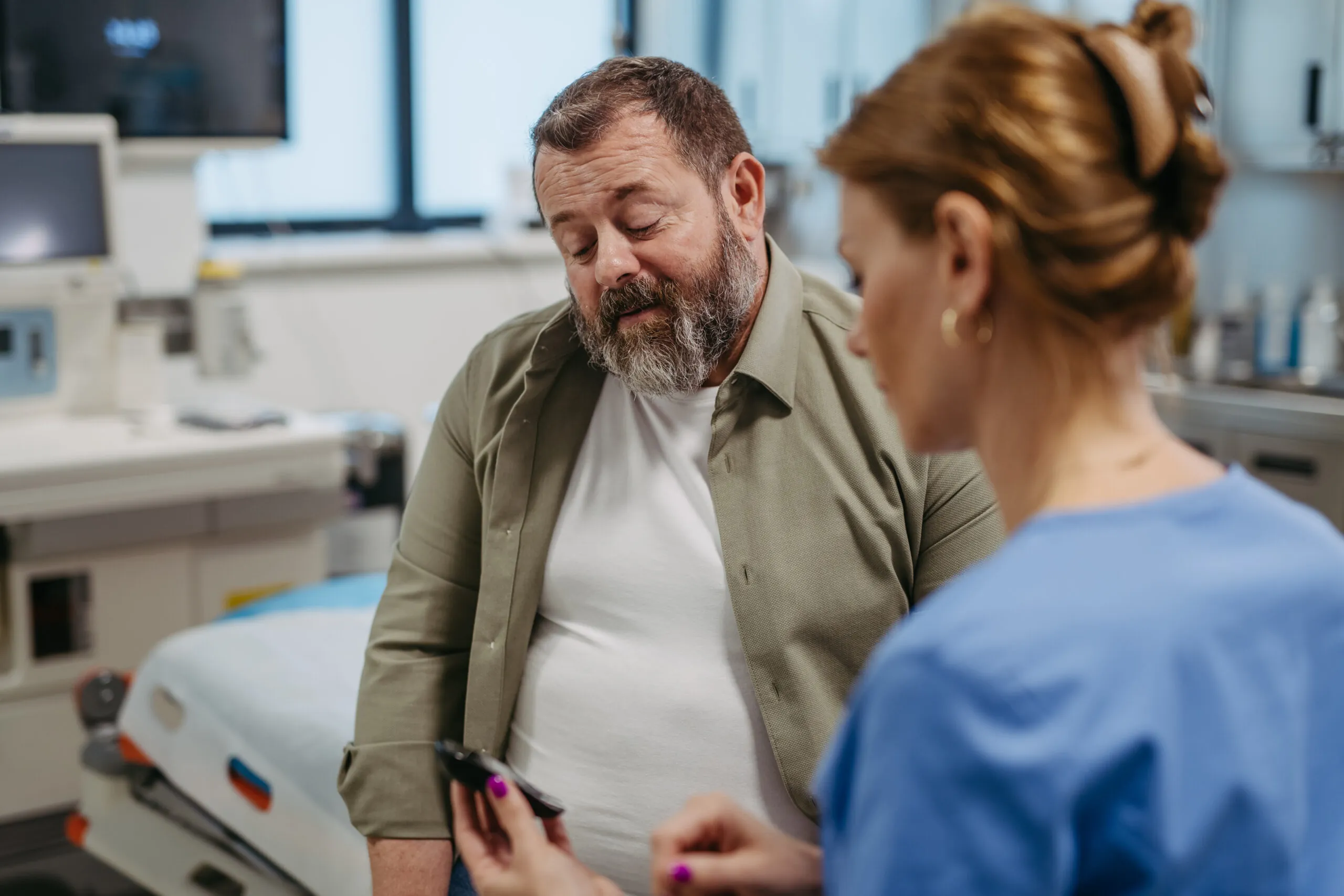
On this page
What is a gastric band?
The surgery involves placing a hollow silicone band around the upper part of your stomach. The band is attached via a tube to a small access port which is placed under the skin of your abdomen. Through this port, your health professional will add or remove saline solution from your band to adjust its tightness in order to control the flow of food through the stomach.
The gastric band, combined with the recommended changes in your eating habits, will help reduce your weight, and hence reduce your BMI (body mass index). It will also improve obesity-related conditions you might have such as type 2 diabetes, high blood pressure and sleep apnoea.
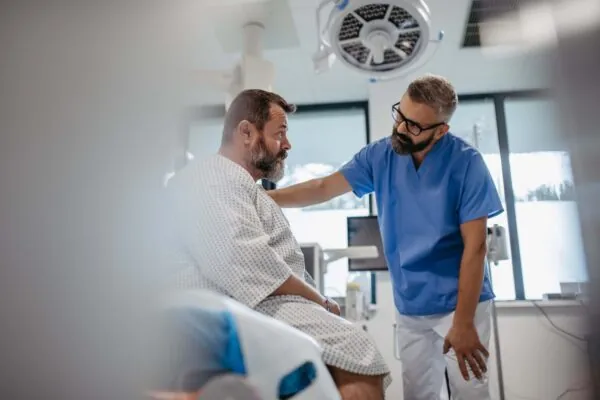
How does a gastric band work?
Gastric band surgery works by decreasing your appetite as it makes you feel full after eating only a small meal. The band squeezes the upper part of the stomach dividing it into two compartments: a small egg-shaped pouch above the band, and the large remainder of the stomach below the band. The band slows the flow of food from the pouch to the rest of the stomach. This delay allows the pouch to stretch quickly after eating only a small meal (usually this part of the stomach only stretches once the whole stomach is full).
Stretching the stomach pouch stimulates the nerve fibres (sensors) which send a signal of feeling ‘full’ to the brain. This mechanism only works well if you eat normal solid food as the sensors need the pressure from bulky foods to be activated. It will not work well if you eat only mashed foods and liquids.
In the first two years following surgery, you can expect to lose an average 50% of the extra weight you were carrying. The band does not routinely need replacement in the future (although band failure can occur) and so long as it remains intact and continues to function well it will help you lose and then maintain your weight.

Is a gastric band right for me?
If you have tried to lose weight by eating healthier and exercising but these measures were not effective, then you might qualify to have a bariatric procedure to help you with your weight loss.
In general, weight loss surgery could be an option for you if:
- Your body mass index (BMI) is 35 or higher, or if your BMI is above 30 and you also suffer from obesity related medical conditions which may improve with the surgery (e.g., diabetes, high blood pressure or sleep apnoea).
- If you are of Asian or Afro-Caribbean origin and your BMI is more than 32.5 (or you a have a BMI more than 27.5 and you also have type 2 diabetes or other weight-related medical issues).
- You are committed to healthy life after surgery by maintaining lifestyle and diet changes in the long term.
A gastric band is an effective weight-loss surgery which reduces your weight and improves many of the obesity related medical conditions you might have. It will also improve your ability to perform routine daily activities and can help improve your quality of life.

How it works
What Happens During My Surgery?
Step 1
A Gastric band surgery is carried out laparoscopically (keyhole surgery) under general anaesthesia and takes about 45 minutes.
Your surgeon will make four small incisions in your belly. Through one of the incisions, he/she will insert a thin telescope connected to a tiny high-definition video camera. The camera will be connected to a TV screen in theatre which your surgeon will be looking at during the surgery. Through the other cuts, long thin instruments are introduced which your surgeon will use to perform the operation.
Step 2
Your surgeon will place the band around the upper portion of your stomach. Once the band is correctly positioned, he/she will usually fold some of your lower stomach over the band and stitch it to your upper stomach pouch. This will help fix the band in place and minimise the chance of it moving after the operation.
Step 3
The band is connected via a small tube to an access port. This port is hidden under the skin of your abdomen just deep enough that it cannot be seen.
How Does Recovery Look Like:
Aftercare and Recovery:
When you wake up after the operation, you will be in the recovery area of the operating department. The recovery team will ensure you are not in pain and that you are safely woken from the anaesthetic. Then you will be transferred to either the ward or the High Dependency Unit based on the pre-operative assessment of your medical problems.
On your first night following surgery, the nursing staff will monitor you carefully, checking your blood pressure and other vital measurements regularly. You will be allowed to drink fluids freely. Pain killers and anti-sickness medications will be given to you as needed.
The morning after your operation you will have breakfast (blended diet) and feel so well you will be keen to go home. You will usually have 2 weeks of blended diet, followed by 2 weeks of soft/lumpy diet. After that you can progress to a normal solid diet, just in much smaller quantities now. Both the bariatric surgeons and the dietician will review you on the ward before you leave and provide further advice if needed.
Read the related article: Gastric Band Turkey: Is Turkey Weight Loss Surgery Safe? Know the Risks Before You Try
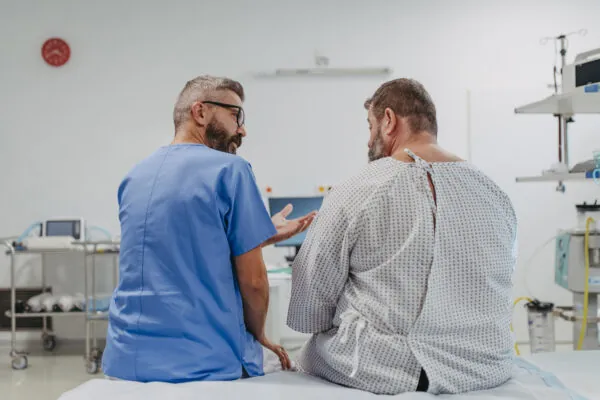
Medication & Wound Care:
It is important to starting moving and walking as soon as possible after the operation. During your hospital stay, and for 6 days afterwards, you will be given a small injection under your skin to thin your blood slightly to reduce the risk of clots forming in your legs (deep vein thrombosis).On your day of discharge, the hospital will supply you with the medications you need following surgery which will include:
- Anti-acid medication- taken for 3 months after surgery
- Pain killers
- Blood-thinning injections (daily for 6 days following surgery).
Your surgeon will either use dissolvable stitches, surgical glue or clips to close the skin at the end of your operation. All of these techniques produce similar results in terms of the final appearance of your scars. If clips are used, you will usually have them taken out 10 days after the surgery at your local GP practice. The nursing staff will check your wound healing during your hospital stay and give you instructions on wound care before your discharge.
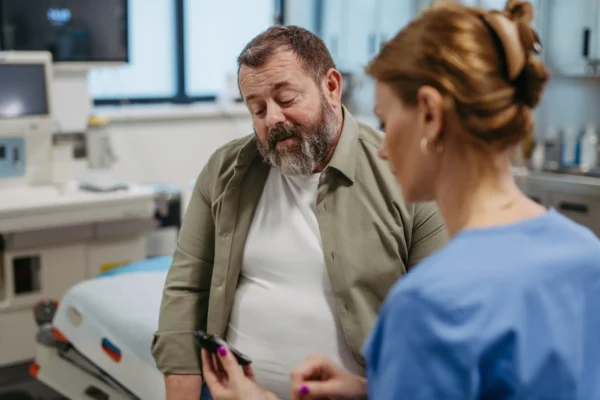
Band Adjustment:
Following discharge, you will have follow up appointments with the medical team to adjust the amount of fluid in your band. Band adjustment is a simple procedure which is done in the outpatient clinic. A special needle is used to pierce your access port and gradually inflate or deflate the band using saline solution. This will adjust the tightness of your band around the stomach and consequently control the flow of food from the pouch to the lower part of the stomach. The band should be tight enough to slow the flow of food through the stomach, but not too tight to completely block this flow.
It usually takes a few adjustments until the optimal band tightness is achieved. It is expected that your initial follow-up appointments will be on a monthly basis. Once the optimal tightness is achieved, we can start to space your follow up visits out. Your attendance to these appointments and adherence to the post-op eating plan is very important to achieve the optimal results.
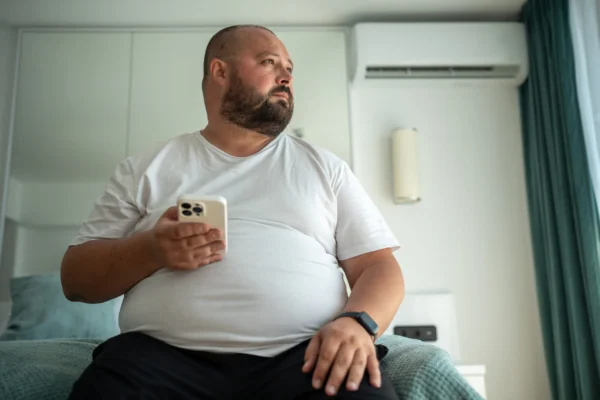
Exercise
You will be encouraged to mobilise and walk straight after surgery. Gentle exercises like walking, housework and swimming could be started shortly after surgery. However, heavy lifting and strenuous gym work should be avoided for the first 6 weeks following surgery.

Side Effects
Here are several potential complications of the gastric band operation. Your surgeon will explain these risks to you in detail during your consultation with him/her before the operation.
In general, early postoperative complications of gastric bands are rare, particularly in the hands of an experienced bariatric team like Phoenix Health. However, the rate of late complications is high. This is mostly related to faults occurring with the banding device or a change in its position necessitating corrective surgery. About 20%-50% of patients may require some kind of corrective surgery in the first five to ten years following gastric band insertion.

The following are the serious or frequently occurring risks with gastric bands:
Early complications:
- Bleeding (blood transfusion may be required)
- Infection and wound pain
- Organ, bowel or vascular damage including risk of splenectomy (removal of spleen). In some of these circumstances it may not be possible to insert the band
- Conversion from laparoscopic (keyhole) to open surgery
- Anaesthetic complications (heart attack, chest infection, sickness and vomiting).
- DVT and pulmonary embolism (blood clots in the legs and lungs)
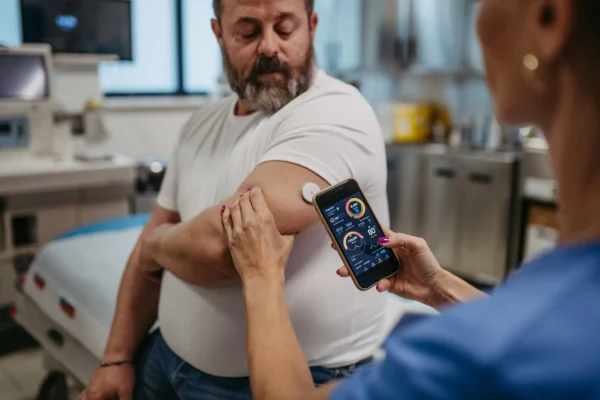
Late complications:
- Fault in the device or change of position (needing corrective surgery):
- Band slippage (acute or chronic) and pouch dilatation (10-40% risk long-term)
- Band erosion (serious but rare complication <1%)
- Band, band tubing and/or access port problems (infection, unbuckling, disconnection, leakage, blockage, port flip, port erosion)
- Chronic oesophageal (gullet) stretching
- Food bolus obstruction and chest pain
- Marked limitation portion size and restricted speed of eating
- Nausea, vomiting and acid reflux
- Nutritional deficiencies and hair loss (uncommon)
- Gallstone formation (10% risk of future cholecystectomy)
- Excessive weight loss and/or loose skin on belly, thighs, arms and breasts.
- Poor or no weight lossWeight re-gain
- Psychological difficulties adapting to weight loss and its consequences.

Your surgeon will discuss with you your estimated mortality risk from this surgery. This varies greatly between patients as everyone has different risks based on their weight and other illnesses. The gastric band is a safe procedure with the average risk to life of around 1 in 1,000. To put this into perspective, the average risk of death after a hip replacement is about 1 in 250.
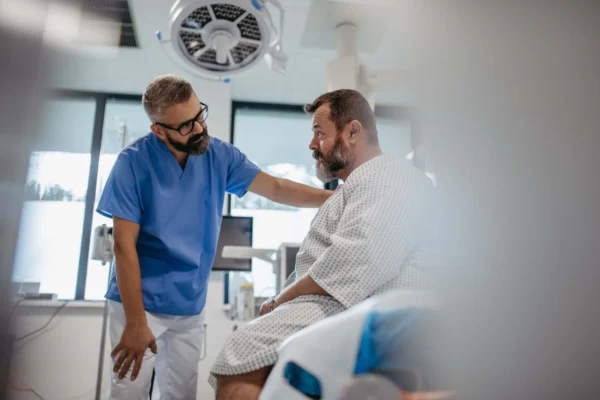
Is a gastric band reversible?
The gastric band is a reversible procedure, which is one of its main advantages. The operation to remove the gastric band is done laparoscopically (keyhole) and takes about 30-45 minutes. Once the band is removed, the stomach will usually return to its original form and function. Very occasionally, some residual restrictive symptoms might persist after the removal of the band. These are mainly related to nerve damage around the stomach or if extensive scarring forms on the stomach at the site of the band.

If you commit to the aftercare process, follow-up appointments, and change in your dietary and lifestyle habits, the gastric band can have a very positive effect not only on your weight, but also on many weight-related medical problems you might have (e.g., diabetes, high blood pressure, sleep apnoea, depression and infertility).
If you fail to reach the expected weight loss after surgery or if you regain weight after initial good weight loss, your surgeon might discuss alternative or additional medical and/or surgical interventions (revisional surgery or ‘re-do’ surgery) which could be offered at the time to help you achieve your target.

References:
Toouli J, Kow L, Ramos AC, Romano S, Gutierrez M, Jokinen J. International multicentre study of safety and effectiveness of Swedish Adjustable Gastric Band in 1-, 3- and 5-year follow-up cohorts. Surgery Obes Relat Dis 2009; 5(5): 598-609.
Phillips E, Ponce J, Cunneen SA, Bhoyrul S, Gomez E, Ikramuddin S, Jacobs M, Kipnes M, Martin L, Marema RT, Pilcher J, Rosenthal R, Rubenstein R, Teixeira J, Trus T, Zundel N. Safety and effectiveness of Realize adjustable gastric band: 3-year prospective study in the United States. Surgery Obes Relat Dis 2009; 5(5):588-97.
Aftercare that’s second to none
We are committed to ensuring that you receive the absolute highest standards of service. That’s why we let you design your own aftercare package to suit your own individual needs.
We offer 3 different choices including our Standard Silver package or our Gold and Platinum Enhanced Aftercare packages.
Choose the aftercare package that’s right for you…
Silver Package
What’s Included…
Treatment of complications at no extra cost for 3 months post-op
Free follow up and band fills for 2 years
Gold Package
What’s Included…
Treatment of complications at no extra cost for 12 months post-op
Free follow up and band fills for 5 years
Surgeon-led follow up
Bariatric gift box
8 consultations with Senior Clinical Psychologist pre/post-op
Platinum Package
What’s Included…
Treatment of complications at no extra cost for 36 months post-op
Free follow up and band fills for 10 years
Surgeon-led follow up
Bariatric gift box
16 consultations with Senior Clinical Psychologist pre/post-op
How Much Does a Gastric Band Cost in the UK?
The gastric band cost UK can vary based on your individual needs and the aftercare provided. At Phoenix Health, we offer competitive pricing packages designed to include expert support, personalised dietary advice, and comprehensive aftercare to help you achieve long-term success. If you are wondering how much does a gastric band cost, our friendly team is here to provide all the details you need. Contact us today to make an informed decision about your weight loss journey.
Ask an Expert
Please fill in the form below or call us on 03452 515 515 and a member of our team will be happy to help with your enquiry.